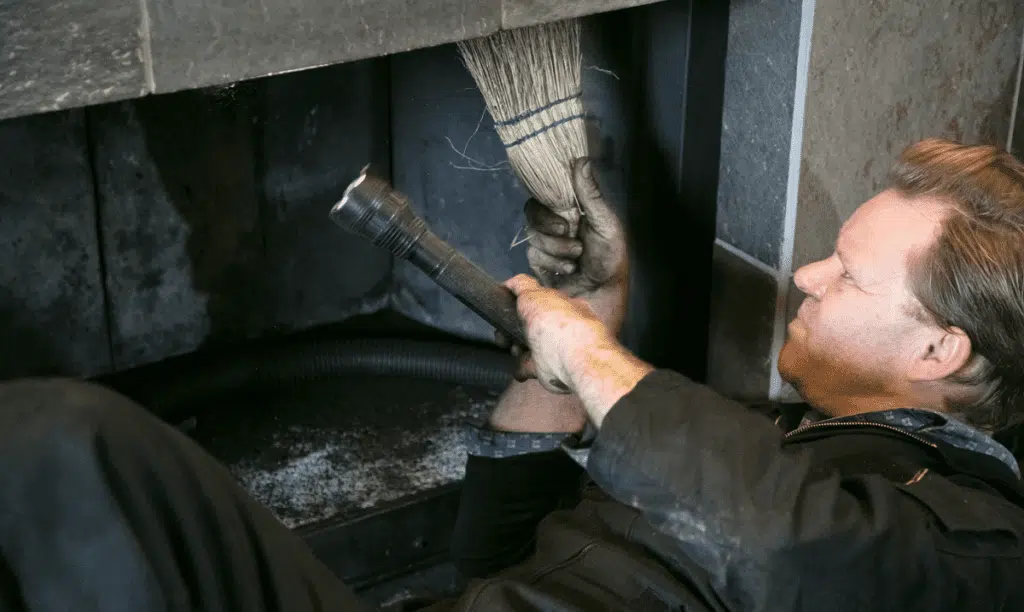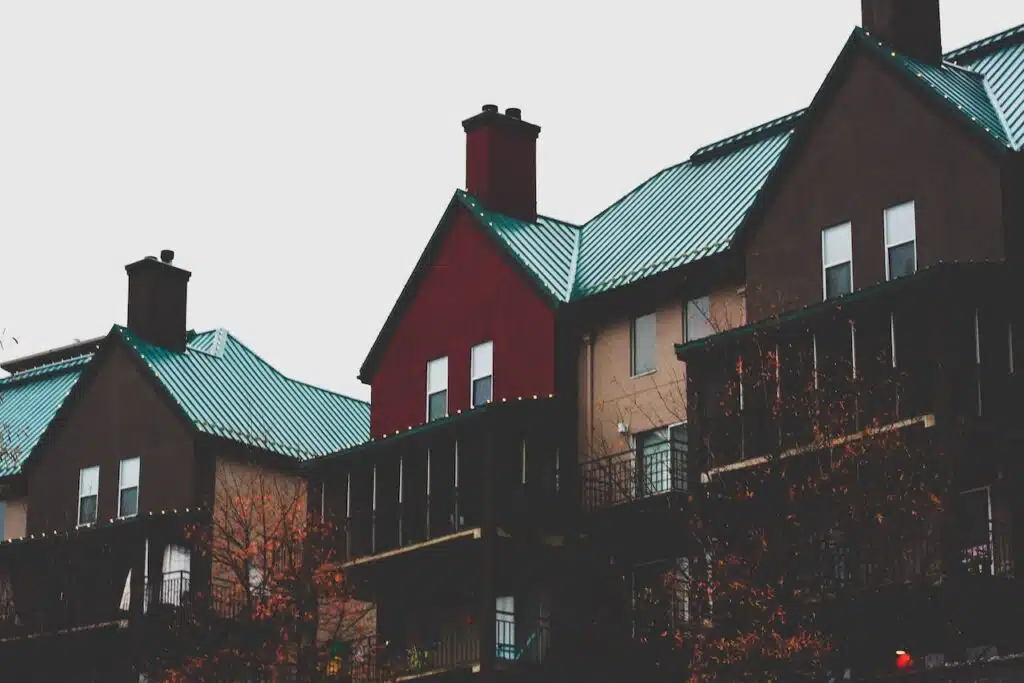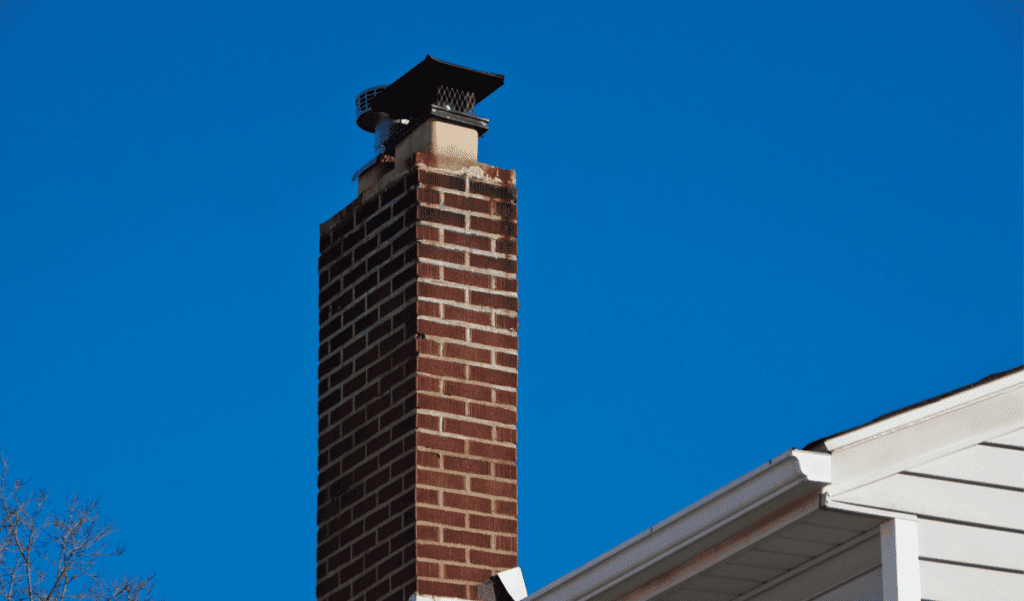
The Importance of Chimney Cleaning
A lot of people don’t think about cleaning their chimneys, but it’s actually really important. I learned this the hard way when my own chimney caught on fire a few years ago. The fire department came and put it out, but not before there was some significant damage.
After that experience, I started to take chimney cleaning seriously. Chimney cleaning is important for a few reasons.
First, if you have a lot of buildup in your chimney (from things like creosote), it can be a major fire hazard. This is what happened to me – the buildup caught on fire and spread to the rest of the house.
It was a scary experience that I wouldn’t wish on anyone else. But even if you don’t have an actual fire, having too much buildup in your chimney can cause other problems as well.
For example, it can restrict airflow and make it harder to start and maintain fires in your fireplace or stove. It can also lead to smoke backing up into your home (which is not only annoying but also dangerous).
RELATED: Sweeping Up Safety: The Importance and How-To of Cleaning Chimney
Why Chimney Cleaning is Important
Explanation of how creosote buildup occurs
Have you ever noticed a black, sticky substance lining the walls of your chimney? This is called creosote, and it forms when wood or coal is burned.
As the smoke travels up the chimney, it cools and condenses on the walls of the flue. Over time, this buildup can become quite thick and pose a serious fire hazard.
The type of fuel you burn can also affect how quickly creosote builds up. Burning unseasoned or wet wood, for example, produces more smoke and increases the amount of creosote that accumulates in your chimney.
The same is true for burning large amounts of paper or cardboard in your fireplace. This is why it’s important to keep an eye on your chimney and have it cleaned regularly to avoid dangerous levels of buildup.
The Dangers of Creosote Buildup
Creosote buildup not only poses a fire hazard but can also lead to carbon monoxide poisoning. When there’s too much creosote in your chimney, it can block proper ventilation and cause toxic gases like carbon monoxide to build up inside your home. Carbon monoxide is an odorless gas that’s difficult to detect without a carbon monoxide detector.
A chimney fire caused by excessive creosote buildup can spread quickly through your home, causing significant damage or even resulting in injury or death. It’s essential to have a professional clean your chimney annually to ensure that any potential hazards are identified ahead of time before they become life-threatening problems.
How Often Should You Clean Your Chimney?
As a homeowner with a fireplace, you might be wondering how often you should clean your chimney. The truth is there’s no one-size-fits-all answer to this question. The frequency of chimney cleaning depends on several factors, including the type of fuel you burn and how often you use your fireplace.
Factors That Affect How Often You Should Clean Your Chimney
One of the most important factors that affect how often you should clean your chimney is the type of fuel you use. If you burn wood, for example, creosote buildup will occur more quickly than if you use gas or oil.
The frequency of use also plays a role in how often your chimney needs to be cleaned. If you only use your fireplace occasionally, it may not need to be cleaned as frequently as if it’s in constant use.
Other factors that can impact how often your chimney needs cleaning include the age and condition of the chimney itself. Older chimneys may have more cracks and crevices where soot can accumulate over time, requiring more frequent cleaning.
General Guidelines for Cleaning Frequency
While there’s no hard-and-fast rule for how often chimneys need to be cleaned, general guidelines do exist. In general, it’s recommended that chimneys should be inspected at least once a year and cleaned as needed. If you only use your fireplace occasionally or have a gas fireplace, then once-a-year cleaning may be sufficient.
However, if you burn wood frequently or notice signs such as black soot buildup on the walls of the chimney or smoke backing up into your home when starting a fire, then more frequent cleanings may be necessary. Remember that regular maintenance is key when it comes to keeping your fireplace safe and efficient!
Signs Your Chimney Needs Cleaning
Visible Signs of Creosote Buildup
Creosote is a flammable substance that can accumulate in your chimney over time. It is created when wood or other materials are burned and can cause serious problems if not removed regularly.
One of the most obvious signs that your chimney needs cleaning is the presence of black soot or a shiny, glazed appearance on the interior of the chimney. This is an indication that creosote has built up, and it’s time to call in a professional for a thorough cleaning.
It’s important not to ignore these visual cues because creosote buildup can lead to chimney fires, which are extremely dangerous and can cause significant damage to your home. Additionally, with time, the accumulation of creosote may also reduce the efficiency of your fireplace over time.
Smoky or Unpleasant Odors Coming from the Fireplace or Chimney
If you notice smoky or unpleasant odors coming from your fireplace or chimney, it’s likely due to an accumulation of soot and debris inside your chimney. The smell will become more noticeable as these substances continue to build up over time. Even worse than undesirable smells is that breathing in these fumes could be a health hazard such as carbon monoxide poisoning.
A professional inspection by trained technicians will help determine how serious things have gotten with your chimney cleaning needs; however, don’t wait until smells are noticeable before scheduling routine cleanings. Keeping an eye out for build-ups on walls near vents may save you trouble down the road.
Difficulty Starting a Fire or Poor Burning Performance
If you’re struggling to get a fire started in your fireplace despite having good quality wood at hand – this might indicate something more serious – it means there might be blockage restricting airflow either through your chimney or air supply. Poor burning performance is another clear sign that your chimney needs cleaning.
This can happen when the airflow in your chimney is obstructed, typically due to a buildup of creosote or other debris. In addition to being frustrating, a poorly performing fireplace can lead to more serious problems, such as the production of harmful gases in your home due to incomplete combustion.
It’s important to ensure that you get a professional cleaning by certified technicians when experiencing any of these symptoms. Regular cleaning will prevent further damage and ensure your home remains safe for you and those around you.
DIY vs. Professional Chimney Cleaning
Pros and Cons of DIY Cleaning
Cleaning your chimney on your own can be a tempting idea, especially when you’re trying to save money. However, chimney cleaning is a dangerous and complex task that requires proper tools, skills, and knowledge.
One of the biggest risks of DIY cleaning is the possibility of accidents or injuries caused by falling off ladders, inhaling chemicals or dust, or getting burned by hot ashes or creosote. Moreover, many homeowners who attempt to clean their own chimneys end up causing more damage than good by using improper techniques or tools.
On the other hand, one advantage of DIY cleaning is that you can save some money if you already have experience and equipment. Additionally, you can learn how to maintain your chimney properly and identify potential issues early on.
Advantages and Benefits of Hiring a Professional
Hiring a professional chimney cleaner may cost more than DIY cleaning initially, but it offers numerous benefits that outweigh the extra expense. A professional cleaner has in-depth knowledge about chimneys and knows how to inspect them for any signs of damage or wear.
They also have specialized equipment such as chimney brushes, cameras, vacuums, and protective gear that ensure thorough cleaning without causing any harm. Aside from safety reasons associated with hiring professionals for this job, by hiring professional cleaners for your regular chimney maintenance needs, you can ensure maximum efficiency for your fireplace system which will ultimately lead to greater energy savings within your home.
Additionally, working with professionals guarantees meeting manufacturer warranty requirements in regards to annual maintenance being performed by certified technicians. While it may seem like an easy task at first glance when considering safety risks along with potential hazards created during these projects, it becomes clear just how important it is to hire a certified technician for all necessary inspections & maintenance related tasks associated with chimneys- regardless if they are for residential or commercial use.
The Chimney Cleaning Process
Step-by-Step Guide to Cleaning a Chimney
If you’ve decided to clean your chimney on your own, it’s important to follow the proper steps to ensure that you do it safely and effectively. Here’s a step-by-step guide to cleaning a chimney:
- Set up your workspace: Before beginning, make sure that you have all the necessary tools and equipment as well as adequate space around the fireplace or stove. Cover any furniture or flooring with a tarp or drop cloth.
- Check for blockages: Use a flashlight and mirror to inspect the inside of the chimney for any blockages, such as bird nests or debris.
- Sweep the flue: Insert your brush into the flue opening and use an up-and-down motion while rotating it clockwise. Make sure you reach all sides of the flue.
- Remove the creosote buildup: Use a creosote remover product if necessary, following instructions carefully.
- Clean up debris: Use a shovel or vacuum to collect any debris that has fallen onto the hearth or floor.
- Repeat if necessary: If there is still visible creosote buildup after sweeping, repeat steps 3-5 until clean.
Tools Needed for The Job
Cleaning a chimney requires specialized tools that are designed specifically for this task. Some common tools include:
- Chimney brush: This is used to scrub and sweep away soot and other debris from the inside of the flue.
- Drop cloth/tarp: This is used to protect surrounding furniture and floors from falling debris during the cleaning process
- Vacuum cleaner: A vacuum cleaner will be useful in collecting excess soot (be sure it’s HEPA filter rated)
- Gloves: Gloves will help protect your hands during the cleaning process
- Safety gear: This includes a helmet or hard hat, safety glasses or goggles, and a dust mask.
- Rod and line: This is used to attach the brush to and help reach different parts of the chimney. Make sure you have all the necessary tools before starting the process.
It’s important that you choose high-quality tools that are both effective and safe. When in doubt, consider hiring a professional chimney cleaner who has access to specialized equipment and experience cleaning chimneys safely.
RELATED: The Hidden Danger Above: An Expert’s Guide to Chimney Cleaning and Maintenance
Tips for Maintaining a Clean Chimney
Whether you’ve just had your chimney professionally cleaned or are trying to reduce creosote buildup between cleanings, there are several steps you can take to keep your chimney clean and safe. Here are some best practices for maintaining a clean chimney:
Best Practices for Reducing Creosote Buildup Between Cleanings
One of the best ways to reduce creosote buildup in your chimney is by burning dry, seasoned firewood. Freshly cut wood contains high levels of moisture that produce more smoke and contribute to the formation of creosote.
To properly season wood, it should be split and stored in a dry area with good ventilation for at least six months before being burned. Another way to reduce creosote buildup is by burning hot, bright fires instead of slow-burning, smoldering fires.
Hot fires create less smoke and vaporize any residual moisture in the wood, reducing the amount of creosote produced. Avoid using unseasoned softwoods like pine or cedar, as they contain high amounts of resin that can contribute to creosote buildup in your chimney.
How to Properly Store Firewood
Proper storage of firewood is crucial for maintaining a clean and safe chimney. Wood that is not properly stored may become damp or infested with pests, making it unsuitable for burning. To properly store firewood, it should be stacked off the ground on a solid surface such as concrete or bricks.
The stack should be covered with a tarp or other waterproof material but left open on the sides for ventilation. This will protect the wood from rain while allowing air circulation to prevent mold growth.
It’s also important to keep firewood at least 30 feet away from your home and other structures as it can attract pests like termites and rodents that could cause damage to your property. By following these tips, you can help maintain a clean and safe chimney for years to come.
Frequently Asked Questions
What is the reason for chimney cleaning?
Chimney cleaning is necessary to remove soot, creosote, and other obstructions that can hinder the proper venting of smoke and gases, and to prevent the risk of a chimney fire. Regular cleaning also ensures the efficient operation of the fireplace or heating appliance and prevents harmful substances from being released into the home.
What is the best thing to clean a chimney?
The best thing to clean a chimney is a specialized chimney brush that matches your chimney’s dimensions, along with flexible rods to reach the full length of the chimney. Additionally, creosote remover chemicals can be used to help break down stubborn deposits.
Is it safe to clean a chimney?
Cleaning a chimney can be safe when done by a professional chimney sweep who has the necessary training and equipment. However, cleaning a chimney yourself can be risky without the appropriate knowledge, tools, and safety precautions.
How do you clean a chimney from the inside?
To clean a chimney from the inside, you need a chimney brush that fits the dimensions of your chimney and flexible rods to attach to the brush. From the top of the chimney, you scrub the interior using the brush and rods, pushing the soot and creosote down into the fireplace, where it can be vacuumed or swept up.
What is the purpose of using a chimney?
The purpose of a chimney is to safely vent smoke, gases, and other combustion byproducts from a fireplace or heating appliance out of a home. It also creates a draft that feeds the fire with oxygen, facilitating efficient combustion.
Why is the chimney important?
A chimney is important because it facilitates the safe operation of a fireplace or heating appliance. Without a properly functioning chimney, harmful gases like carbon monoxide could accumulate in the house, and there’s an increased risk of a fire due to creosote buildup.
Conclusion
Cleaning your chimney is an important task that should not be overlooked. By regularly cleaning your chimney, you can prevent dangerous creosote buildup and reduce the risk of chimney fires and carbon monoxide poisoning. Not only does regular cleaning help keep you and your family safe, but it can also save you money in the long run by preventing costly damage to your chimney or home.
If you’re not comfortable doing the job yourself, it’s always best to hire a professional chimney sweep. While there may be a cost associated with hiring a professional, the peace of mind that comes from knowing that your chimney has been properly cleaned is priceless.
Stay Safe and Enjoy Your Fireplace
Taking care of your fireplace and chimney requires some effort, but it is well worth it. The warmth and ambiance provided by a glowing fire on a cold winter night are hard to beat. Regular maintenance can help ensure that you can enjoy your fireplace without worrying about safety hazards or expensive repairs.
So go ahead, light up a fire, and relax with a good book or movie. Just make sure to keep an eye on the flames and always have working smoke detectors in place – because there’s nothing better than enjoying the warmth of a cozy fire while knowing that you’re keeping yourself and your loved ones safe!






